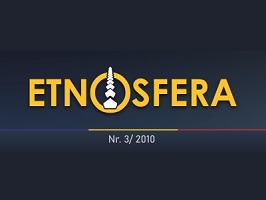Romania – layers of collective identity in the 19th and the 20th centuries – an outline. Second part
Romania – layers of collective identity in the 19th and the 20th centuries – an outline. Second part
Author(s): Radu Baltasiu, Boatcă Manuela, Șerban Adela, Ovidiana BulumacSubject(s): Ethnohistory, Political history, Social history, Recent History (1900 till today), 19th Century, Identity of Collectives
Published by: Editura Academiei Române
Keywords: Romania; collective identity; 19th century; 20th century;
Summary/Abstract: The Second Renaissance took place in two stages, that could be called „heroic“ and „critical“ (Bădescu, 2003). At a certain moment both were coming to exist in parallel and to become two major organizing paradigms: the synchronist and the critical or conservative thought. The „heroic culture” is the answer of Romanian society to the urgency/provocation of “reentering” its history: recovering the social space, the national territory, the right to engage in trade, to have a state - as well as to its own European identity. The effort was started by the Revolution of Tudor Vladimirescu in 1821 in Wallachia, to be continued by the Transylvanian School and at its peak by the 1848 revolutionaries. The ideal type of the “heroic” intellectual is Ion Heliade Rădulescu.
Journal: Etnosfera
- Issue Year: 7/2010
- Issue No: 3
- Page Range: 1-24
- Page Count: 24
- Language: English

